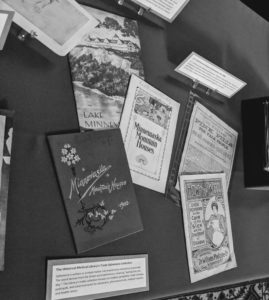– by Wood Institute travel grantee Ryan Habermeyer*
Several years ago, in a daze of dissertation research, I stumbled upon a passing comment by William Osler, pioneer of modern medicine: “To talk of diseases is a sort of Arabian Nights entertainment.” What a curious coupling, fairy tales and medicine. As much as I tried to forget it and press forward with my dissertation I kept returning to that idea. How is pathology a bedfellow to fairy tales?
Here is my best conclusion: For centuries, disease was almost indistinguishable from magic – spontaneous, metamorphic, at times exotic, powerful, and mysterious. For centuries, disease provoked both wonder and fear; it elicited a kind of grotesque enchantment. Disease, I like to think Osler is suggesting, tells a story. It has traceable beginnings, chaotic middles and dramatic ends. To us, the victims, it is the villain which must be vanquished; but I imagine if diseases could talk they would cast themselves as the heroes and heroines struggling to survive against impossible odds.

